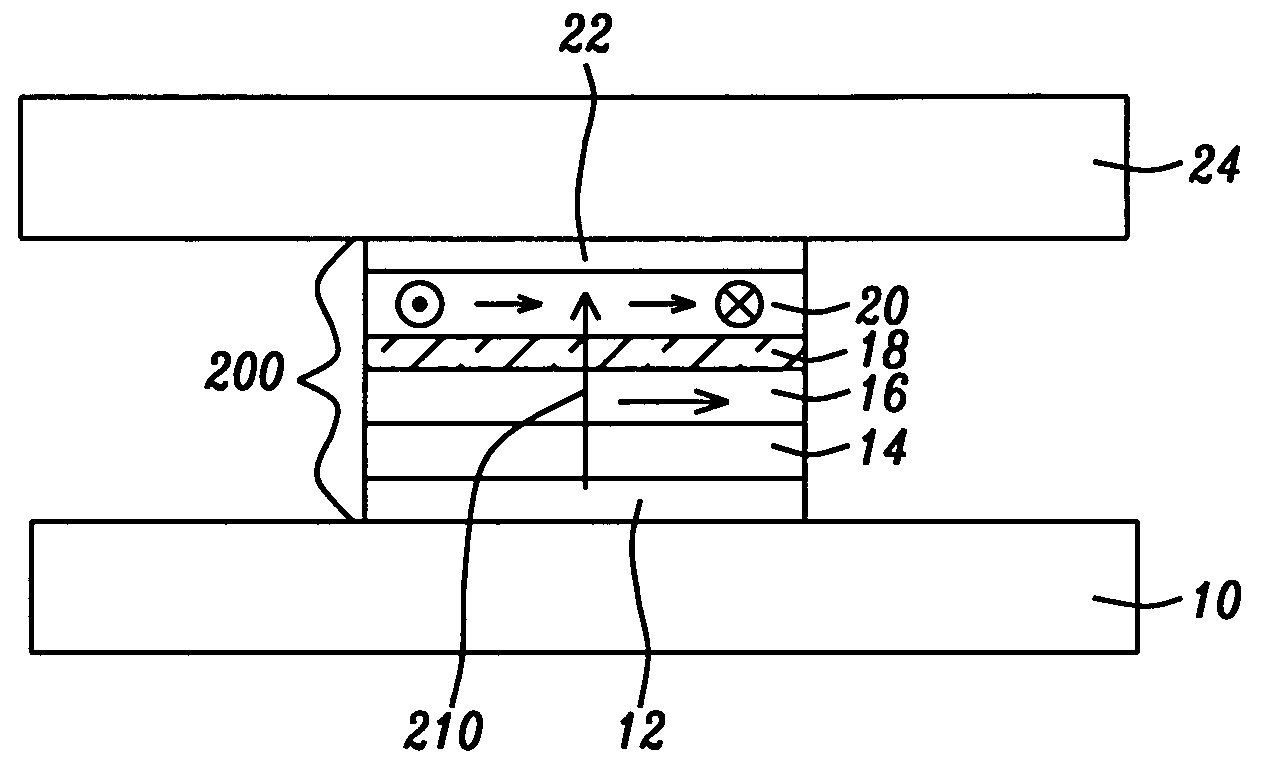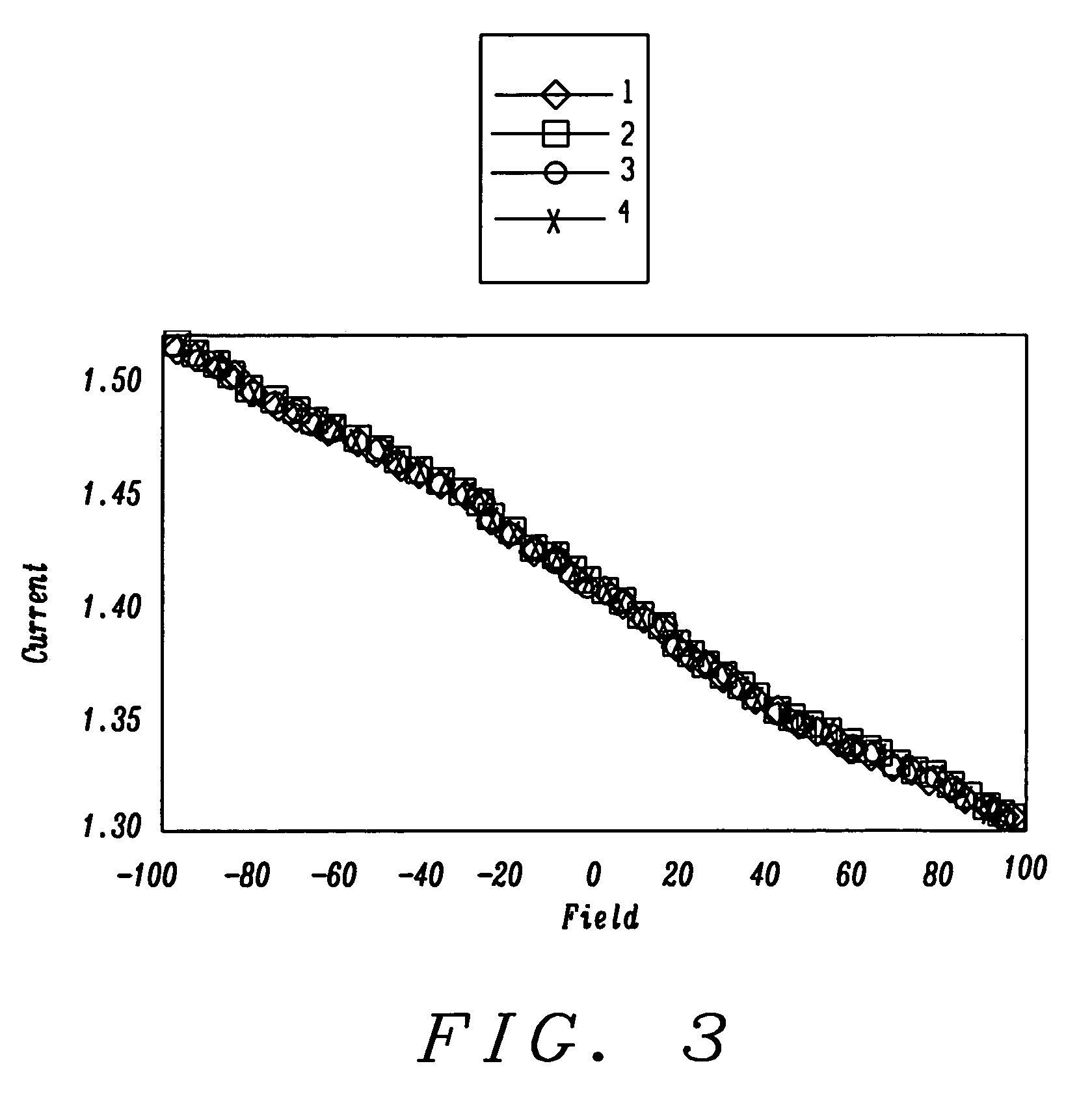Method of forming a CPP magnetic recording head with a self-stabilizing vortex configuration
a technology of self-stabilizing vortex and cpp magnetic recording head, which is applied in the direction of manufacturing head surface, instruments, manufacturing tools, etc., can solve the problems of more severe and immediate problems, the noise of barkhausen noise in the sensor signal, and the stabilization of its magnetically free layer, so as to reduce the risk of side reading, the effect of generally more effective shielding of the elemen
- Summary
- Abstract
- Description
- Claims
- Application Information
AI Technical Summary
Benefits of technology
Problems solved by technology
Method used
Image
Examples
second embodiment
[0032]Referring next to FIG. 4, there is shown a second embodiment in which the layer configuration of the cell element (200) is formed as described in FIG. 1, but it is enclosed in a shield that closely surrounds the layers and protects them from extraneous fields and side-reading. The lower shield is formed first and is horizontally shaped as the lower shield in FIG. 1, but in forming the upper shield, two vertical layers (25) of magnetically permeable material, of width between approximately 5 and 500 angstroms, are formed projecting downward from a lower surface of a horizontal portion of the upper shield (24). The horizontal portion (24) is substantially of the same width and thickness as the lower shield (10), and are horizontally symmetrically disposed about the sides of the layer configuration but do not contact the sides. The spaces (15) between the upper and lower shields and the sides of the layer configuration are filled with an insulating material.
third embodiment
[0033]Referring to FIG. 5, there is shown a third embodiment in which the upper shield remains as in FIG. 4, but the lower shield (10) is formed to include a centrally symmetric pedestal (9), having substantially the same width as the cell element (200), on which the configuration of element layers is formed. The upper shield must be correspondingly raised and its downward projecting portions (25) must be lengthened. The pedestal raises the element within the region between the upper and lower shields, providing even greater protection of the element from extraneous external fields and side-reading.
PUM
| Property | Measurement | Unit |
|---|---|---|
| Length | aaaaa | aaaaa |
| Thickness | aaaaa | aaaaa |
| Thickness | aaaaa | aaaaa |
Abstract
Description
Claims
Application Information
 Login to View More
Login to View More - R&D
- Intellectual Property
- Life Sciences
- Materials
- Tech Scout
- Unparalleled Data Quality
- Higher Quality Content
- 60% Fewer Hallucinations
Browse by: Latest US Patents, China's latest patents, Technical Efficacy Thesaurus, Application Domain, Technology Topic, Popular Technical Reports.
© 2025 PatSnap. All rights reserved.Legal|Privacy policy|Modern Slavery Act Transparency Statement|Sitemap|About US| Contact US: help@patsnap.com



